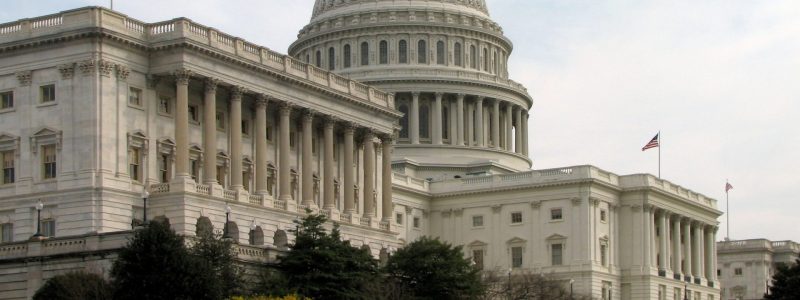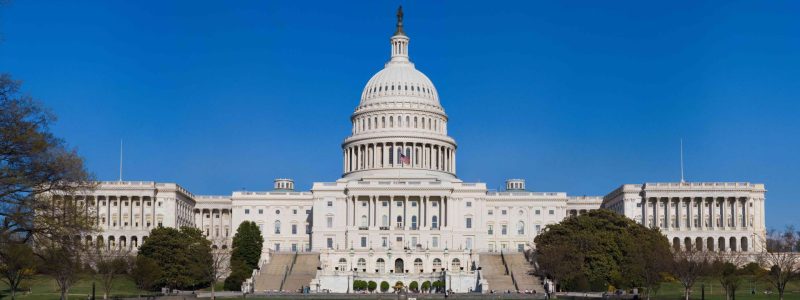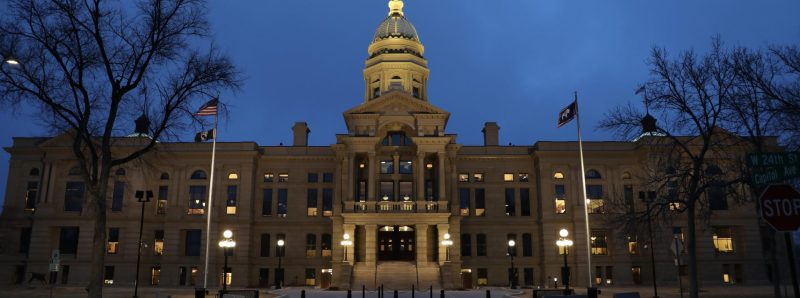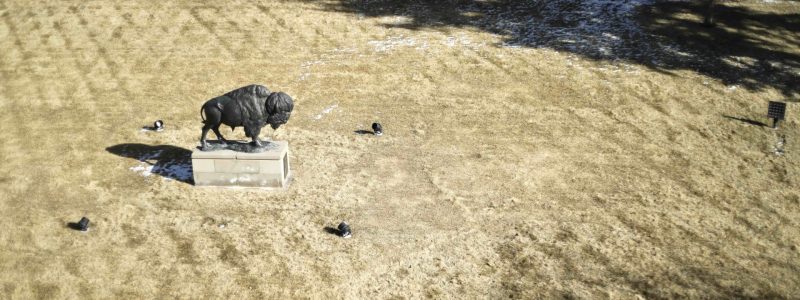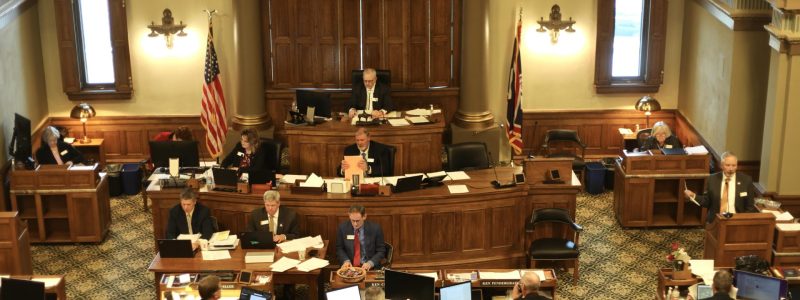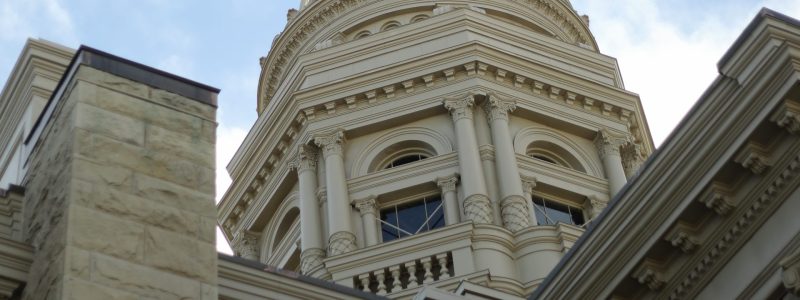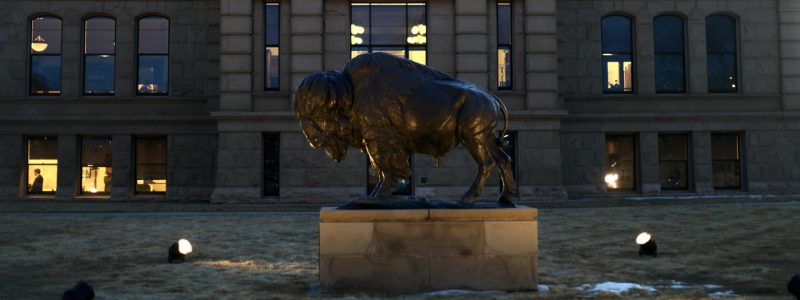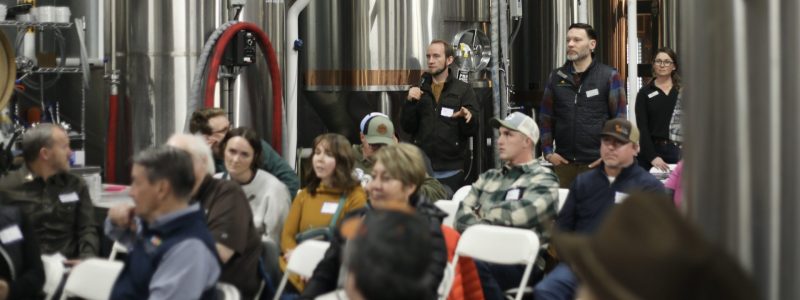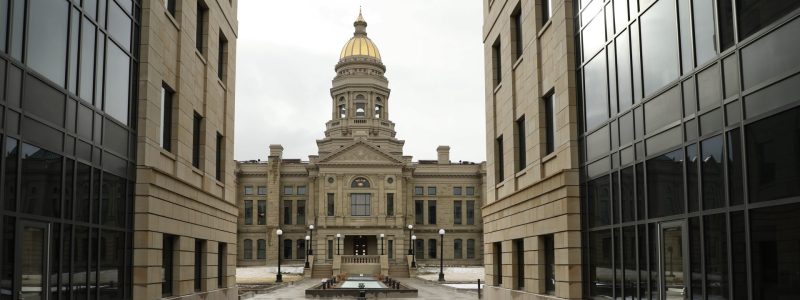Update: The House of Representatives passed the budget bill and President Trump signed it into law on July 4.
Late Tuesday morning the Senate narrowly passed its budget reconciliation bill in a 51–50 vote, with Vice President JD Vance breaking the tie. The bill is now back in the House, where representatives have to resolve differences with the Senate version, which they hope to do before the 4th of July.
Public land sales were removed from the Senate bill after immense public outcry, which is a huge win. Thank you to all that raised your voice and championed these shared landscapes.
But the legislation would still have horrific impacts on many Wyoming Outdoor Council priorities, including public lands, tribal conservation, and energy and climate. Here are a few of the most troubling provisions.
Oil and Gas Free-For-All
The Senate bill would cut the public out of having a say in oil and gas leasing on our public lands. It would also cost Wyoming a lot of money in lost royalties.
Royalty rates for oil and gas drilling had been raised during the Biden administration. This bill would lower them back down to 12.5% — the rate they had been since 1920 — which by some estimates cost Wyoming up to $3.6 billion in lost revenue between 2013 and 2022.
The bill also strips the Bureau of Land Management of its discretion to say no to proposed oil and gas lease sales. It doesn’t matter if local communities, hunters, anglers, or ranchers have concerns; the BLM would be required to lease any eligible parcel of public land nominated by industry — an outright affront to multiple use.
Clean Energy Tax Credits Axed
The good news: The Senate bill removed a harmful excise tax that would have unfairly targeted solar and wind projects.
The bad news: Both the House and the Senate have opted to eliminate home energy efficiency tax credits for projects that go into service after the end of 2025. As a result, rooftop solar, residential heat pumps, and home insulation or weatherization upgrades will cost everyday Wyomingites up to 30% more than they would have otherwise.
Businesses, nonprofits, communities, and tribes would have a little more time to take advantage of existing tax credits: they would have to begin construction within a year after the bill’s passage. Still, both the House and Senate versions of the bill include a rapid phase-down of these tax credits, which would drastically harm the clean energy industry and eliminate good paying jobs.
Tribal FUNDING GUTTED
The bill cuts over $700 million from the Bureau of Indian Affairs — basically one-quarter of BIA’s budget — including programs for economic development and land consolidation. This is a flagrant disrespect of treaty rights and tribal sovereignty, and the impacts for tribal members will be massive.
“These cuts are being carried out without any tribal consultation whatsoever, in plain violation of our trust and treaty responsibilities. This is not just a moral question of what we owe Native people — it is also a question of the law.”
– Senator Brian Schatz
For decades, tribal communities were made promises in exchange for the land that created states like Wyoming — including that they would receive housing, health care, and infrastructure development services, as well as access to safe drinking water. With this bill, the federal government would be reneging on those promises.
Locally, the BIA’s Wind River Agency in Fort Washakie manages 2.2 million acres of land, including mountain ranges, river and stream corridors, and a vast landscape of sagebrush within the Wind River Indian Reservation. This is an already underfunded agency, which handles everything from oil and gas permitting to Environmental Policy Act analysis to water on tribal lands. Losing that capacity at BIA would effectively stymie vital projects in tribal communities.
The bill would also cut $617 million from the Indian Land Consolidation Program, which was developed to help right historical wrongs surrounding land ownership. The program has made it possible to return millions of acres of lands to tribal ownership. With the proposed budget bill, Congress would be unilaterally deciding that the program would end — absent tribal consultation or understanding of the implications it poses for tribes and their communities.
Tribal Energy and Water Programs Slashed
The budget bill cuts funding from multiple loan programs that were aimed at financing energy infrastructure projects in tribal communities, including solar. The Tribal Energy Loan Guarantee Program in particular has been crucial for advancing energy self-determination and creating economic opportunities in Indian Country. Without these programs, tribes will find it substantially more difficult to develop their energy resources, improve grid reliability, and transition to cleaner, more affordable energy.
The Senate bill would also cut a drastic 90% of funding from a program that helps states and tribal communities access safe drinking water. The Drinking Water State Revolving Fund provides funding for water infrastructure and safety projects. Tribal nations would go from receiving $22.5 million collectively in the current fiscal year to a mere $2 million next year.
This catastrophic reduction would jeopardize the ability of each tribe’s water departments to provide safe and clean drinking water. With significantly constrained resources, critical functions like well water testing and maintaining drinking water facilities in communities like Fort Washakie, Ethete, and Arapahoe would be impacted. The proposed cuts could lead to layoffs of essential workers responsible for water quality oversight, jeopardizing public health and the long-term sustainability of water infrastructure on tribal lands.
Assault on the Land and Water Conservation Fund
The Great American Outdoors Act, passed in 2020, allocated $900 million annually to increase public access and protect the nation’s public lands. Congress is now seeking to divert roughly 43% of that money away from conservation, recreation, and sportspeople access and towards deferred maintenance of infrastructure instead, even though other federal funds have been allocated for deferred maintenance.
In a Nutshell
Although some of the provisions in the Senate bill dampen some of the worst impacts of the earlier House version, we anticipate that the bill’s overall impact will increase energy costs for Wyomigites, make diversification of our energy sector more challenging, and increase the emissions that science is clearly telling us need to go down in order to avoid the worst impacts of climate change.

